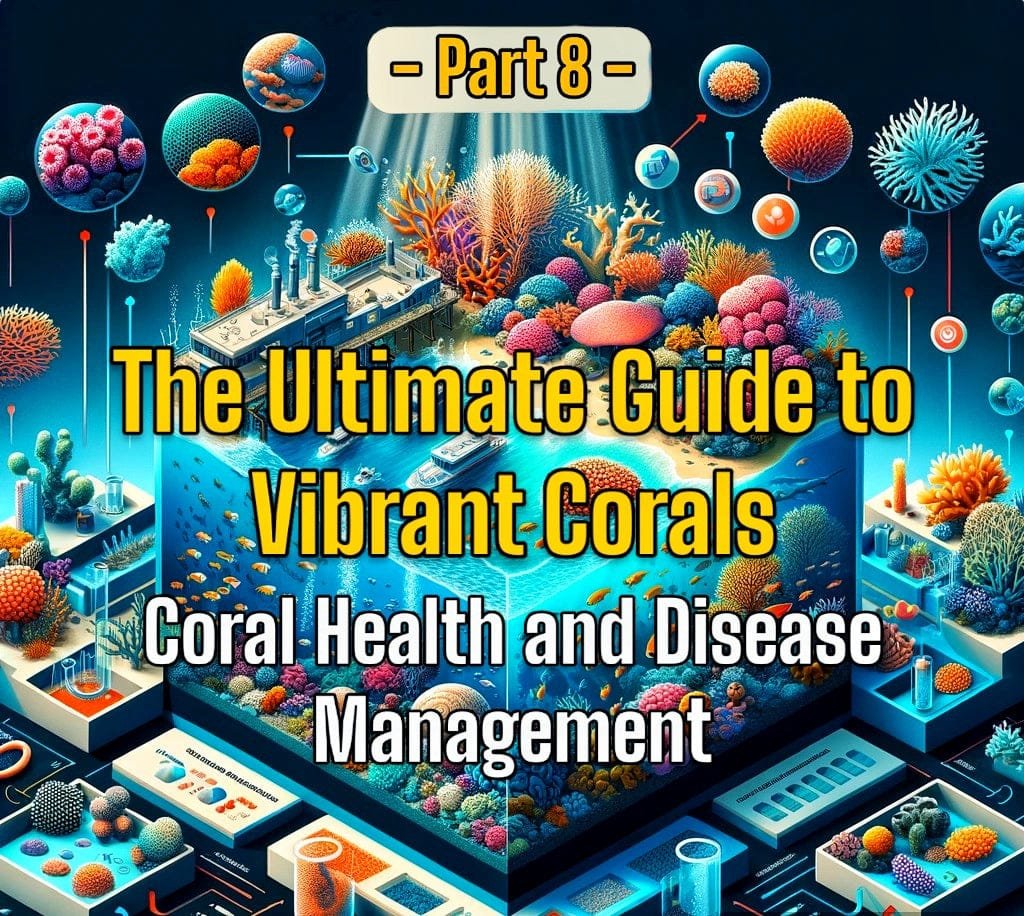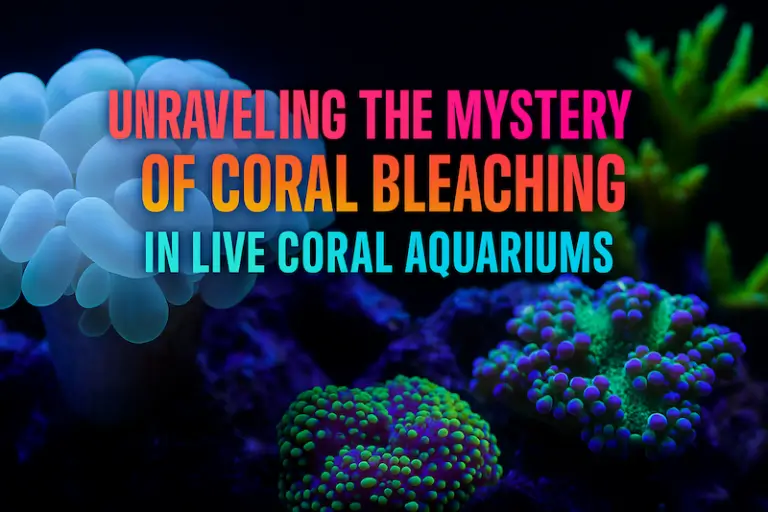The Ultimate Guide to Vibrant Corals – Part 8 – Coral Health and Disease Management
Welcome to Part 8 of “The Ultimate Guide to Vibrant Corals” series. In this segment, we’ll explore the critical aspects of coral health and disease management in your reef aquarium. Maintaining optimal coral health is essential for preserving the vibrancy and beauty of your coral reef ecosystem. However, corals are susceptible to various diseases and stressors that can compromise their well-being. Let’s delve into strategies for promoting coral health and preventing common coral diseases in your aquarium.
Understanding Coral Health
Coral health is influenced by a combination of factors, including water quality, lighting, nutrition, and environmental stability. Healthy corals display vibrant colours, robust growth, and active polyp extension. Monitoring these indicators regularly can help identify early signs of stress or disease and take appropriate action to address them promptly.
Maintaining Water Quality
Water quality is paramount for coral health, as corals are highly sensitive to changes in temperature, pH, salinity, and nutrient levels. Regular monitoring of these parameters and maintaining stable water conditions are essential for promoting coral resilience and preventing stress-related health issues.
Providing Optimal Lighting and Flow
Proper lighting and water flow are crucial for the photosynthetic processes and nutrient uptake of corals. Ensure that your aquarium lighting provides the appropriate spectrum and intensity for your coral species, and use circulation pumps to create gentle and consistent water flow throughout the tank.
Balanced Nutrition
Corals obtain a significant portion of their nutrition through photosynthesis, but supplemental feeding can help provide essential nutrients and promote growth. Offer a varied diet of planktonic foods, coral-specific liquid supplements, and vitamin-enriched frozen foods to ensure that your corals receive a balanced and nutritious diet.
Quarantine and Disease Prevention
Quarantine new coral additions before introducing them to your main display tank to prevent the introduction of pests and diseases. Monitor new arrivals closely for signs of stress or disease, and treat as needed in a separate quarantine tank before adding them to your reef. Practice good hygiene and avoid cross-contamination between tanks and equipment to minimise the risk of disease outbreaks.
Identifying and Treating Coral Diseases
Common coral diseases include coral bleaching, tissue necrosis, and infections caused by bacteria, viruses, and parasites. Early detection and treatment are essential for preventing the spread of disease and preserving coral health. Familiarise yourself with the symptoms of common coral diseases and consult with experienced hobbyists or aquatic veterinarians for guidance on diagnosis and treatment options.
Conclusion
In Part 8 of “The Ultimate Guide to Vibrant Corals,” we’ve explored strategies for promoting coral health and preventing common coral diseases in your aquarium. By maintaining optimal water quality, providing appropriate lighting and flow, offering a balanced diet, and practicing disease prevention measures, you can create an environment that fosters vibrant coral growth and showcases their natural beauty. In the final installment, “Part 9: Coral Reef Conservation – Preserving Our Ocean’s Treasures,” we’ll discuss the importance of coral reef conservation efforts and how reef hobbyists can contribute to protecting these fragile ecosystems.
Stay tuned as we conclude our journey to unlock the secrets of vibrant corals in your aquarium!
Stay tuned for Part 9 of the series, “Coral Reef Conservation – Preserving Our Ocean’s Treasures,” where we’ll discuss the importance of coral reef conservation efforts and how reef hobbyists can contribute to protecting these fragile ecosystems.








